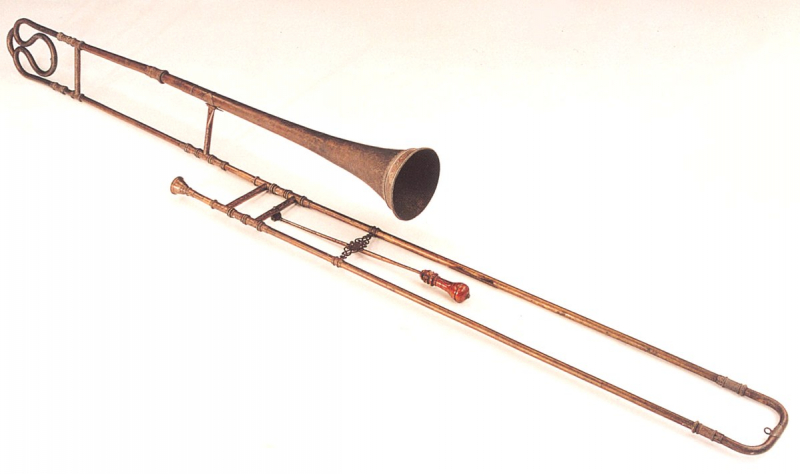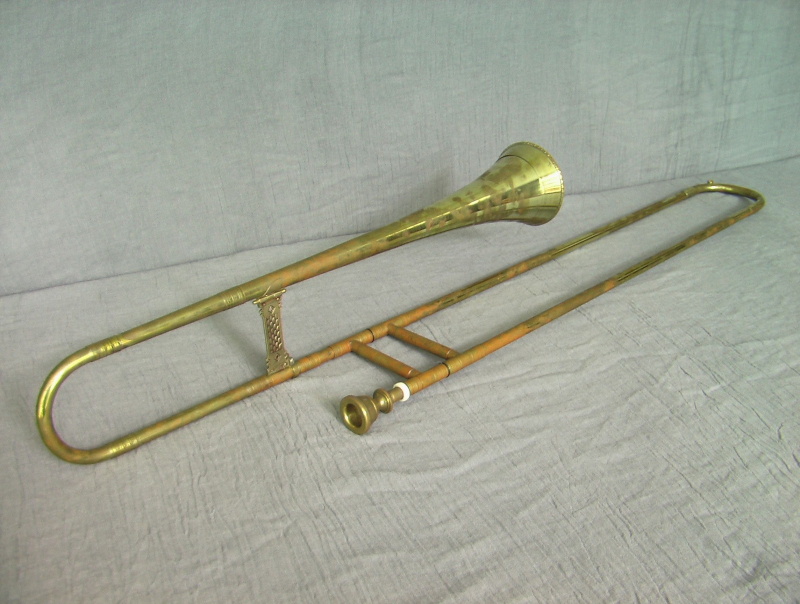Sackbut
The early trombone designs that were popular during the Renaissance and Baroque eras are referred to as "sackbuts." The phrase sackbut is documented two decades before the term trombone, while the German term Posaune is documented much earlier. Before the instrument fell out of use in the eighteenth century, the English term sackbut was in use; when it was revived, the Italian term trombone took over. An ancient trombone or a facsimile is referred to as a sackbut in contemporary English. A sackbut differs from later trombones by having a smaller, more cylindrically-proportioned bore and a less-flared bell in addition to the trombone's distinctive telescopic slide, which is used to modify the length of the tube to change pitch. Unlike the earlier slide trumpet from which it evolved, the sackbut possesses a U-shaped slide with two parallel sliding tubes, rather than just one.
Sackbuts have always been associated with death and the afterlife because of their particularly melancholy and magnificent tone. The instrument served as a representation of divine presence, an instrument of judgment, and the voice of the angels. For example, L'Orfeo, Alceste, The Magic Flute, the Death March from Saul, and funeral aequales all have this meaning.















